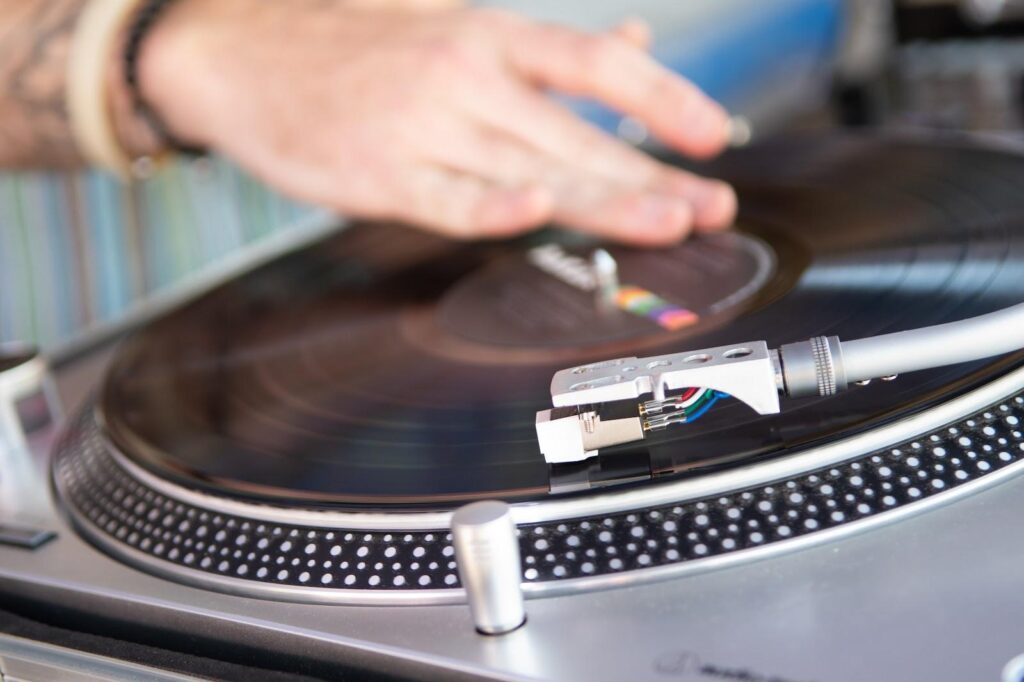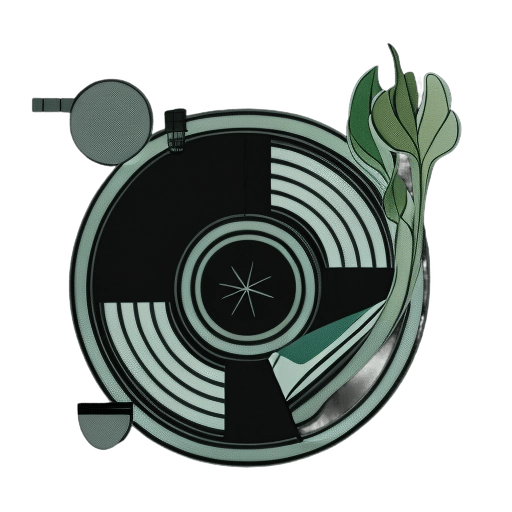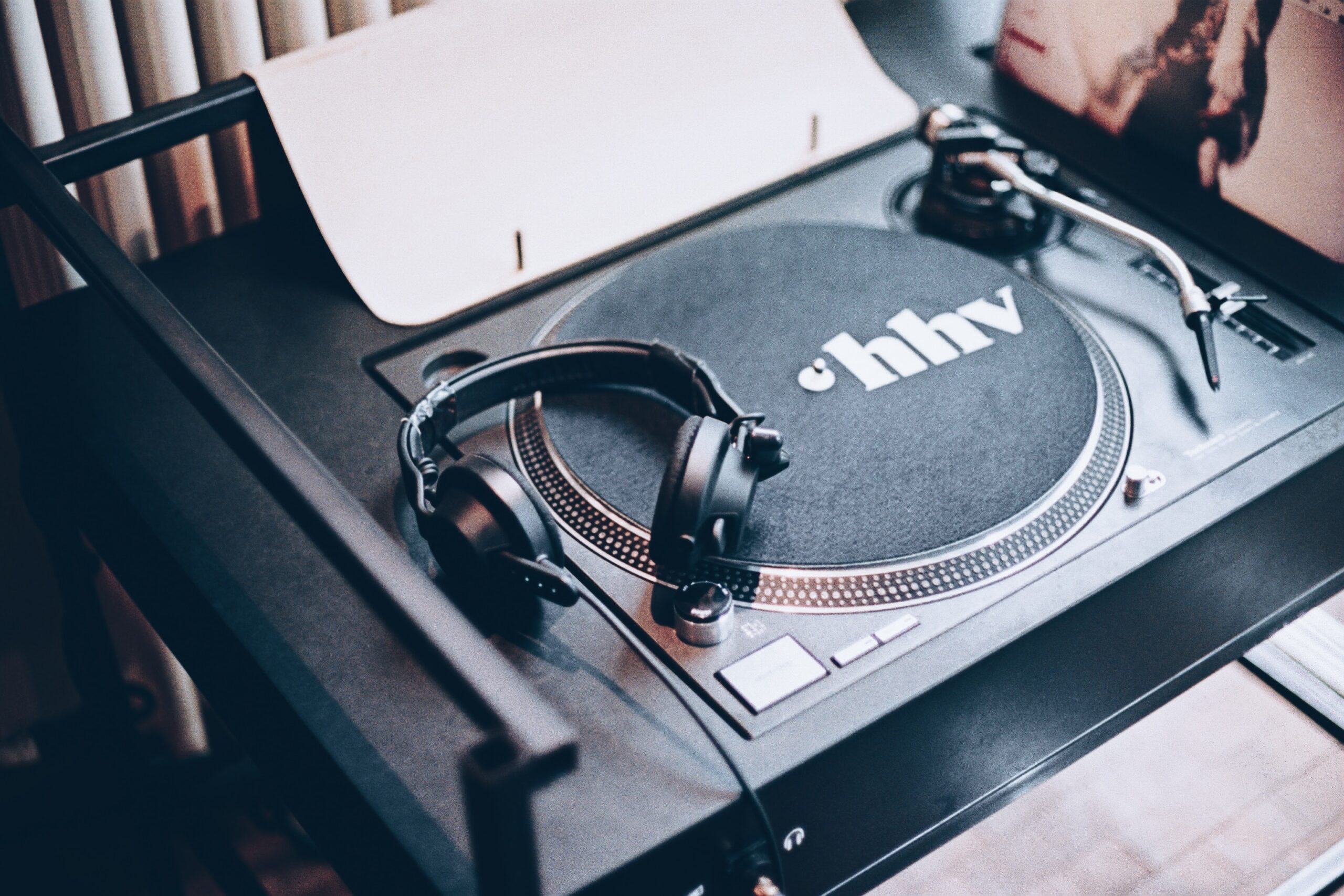Mastering the use of a turntable is a starting point for creating a great mix, regardless of whether you’re a novice or an experienced professional. In this blog post, we’ll explore the basics of how DJ turntables work, discuss some basic and advanced techniques, and offer some tips and tricks for using a turntable like a pro.
How Do DJ Turntables Work?
DJ turntables are essentially vinyl record players that have been modified for DJ use. The turntable has a motor that rotates the record at a steady speed, while a tonearm with a cartridge and stylus reads the grooves on the record. The signal from the stylus is then amplified and sent to a mixer, which allows the DJ to control the volume and apply effects. DJs use the turntable to manipulate the music in various ways, including beatmatching, cueing, and scratching.

Basic DJ Techniques
This section of the guide covers the basic techniques every DJ should know, including beatmatching, cueing, and scratching. These techniques are essential to creating seamless and exciting mixes.
Beatmatching
Beatmatching is a fundamental technique that is essential to creating a seamless mix. As you become more experienced, you will find that beatmatching becomes second nature, and you will be able to match the tempos of two tracks quickly and accurately.
One tip for beatmatching is to use the pitch control on the turntable to adjust the tempo gradually rather than trying to make significant adjustments all at once. This will help you to fine-tune the tempo and ensure that the beats are perfectly aligned. Another tip is to use the headphones to listen to both tracks simultaneously, so you can hear when the beats are aligned and when they are not. With practice, you can develop your beatmatching skills and create mixes that will keep your audience dancing all night long.
Cueing
Cueing is another essential technique for any DJ. It allows the DJ to preview a track before playing it in the mix, ensuring that the track is in the correct key and tempo and that it will work well with the other tracks in the mix. To cue a track, the DJ uses headphones to listen to the track on the turntable and finds the starting point.
The DJ can then use the cue button on the mixer to mark the starting point and listen to the track in the headphones while the first track is still playing. This allows the DJ to adjust the pitch and tempo of the new track so that it matches the first track, creating a seamless transition between the two.
Scratching
Scratching is a technique that has been used by DJs for decades and has become an essential part of hip-hop and electronic dance music. DJs can create a wide range of different scratching sounds by varying the speed, direction, and pressure of the record movement. Scratching can be used to add a unique and exciting element to a mix and can be combined with other techniques like beat juggling or backspinning to create complex and dynamic rhythms.
To execute the scratching technique, the DJ holds the record steady with one hand while moving the other hand back and forth over the record. The stylus remains in contact with the record at all times, creating a distinctive sound that can be manipulated in various ways. DJs can use techniques like the baby scratch, the chirp, and the flare to create different scratching sounds and can also use effects like delay or reverb to enhance the sound further.

Advanced DJ Techniques
In this article, we will explore the advanced DJ techniques that can take your skills to the next level. These techniques include beat juggling, transforming, and backspinning; they require precision and timing to execute correctly.
Beat juggling
Beat juggling is an advanced DJ technique that involves manipulating the beats of a track by using two copies of the same record. This technique allows the DJ to create a unique rhythm by switching between the two copies of the record using the crossfader on the mixer. Beat juggling requires precision and timing to execute correctly, but with practice, you can create impressive and complex mixes that will keep your audience dancing all night long.
Transforming
Transforming is a technique that is commonly used in hip-hop and electronic dance music. This technique involves rapidly switching the crossfader between two tracks, creating a stuttering effect that can add a unique and exciting element to your mixes. To execute the technique, the DJ starts with two tracks that have similar tempos and beats. The DJ then uses the crossfader to rapidly switch between the two tracks, creating a rhythm that alternates between the two. This can be a challenging technique to master, as it requires precise timing and coordination.
Backspinning
Backspinning is a popular DJ technique that can add a unique and exciting element to your mixes. To execute a backspin, the DJ rapidly spins the record backward while the track is still playing, creating a rewinding effect. This can be a great way to build tension and create a dramatic effect, especially when used in conjunction with other techniques like scratching or beat juggling.
One important thing to keep in mind when using the backspin technique is to be careful not to damage the record or the stylus. Rapidly spinning the record backward can put a lot of stress on the grooves and the stylus, which can lead to skipping or even permanent damage. To avoid this, make sure to use high-quality records and equipment and practice the backspin technique in a controlled environment before using it in a live performance.
Common Problems and Solutions
One common problem when using a turntable is skipping or jumping off the stylus. This can be caused by various factors, such as dust or dirt on the record, an improperly balanced tonearm, or a worn-out stylus. To avoid this problem, it’s essential to keep your records clean and properly maintain your turntable.
Tips and Tricks for Using a Turntable Like a Pro
A critical aspect of using a turntable is selecting the proper records for your mix. Whether you’re spinning vinyl or using digital files, it’s essential to choose tracks that will work well together and keep the energy flowing. Look for records with similar tempos and styles, and experiment with different combinations to find the perfect mix.
Another essential consideration is equipment setup. Make sure your turntable is properly grounded and connected to your mixer and that your mixer is appropriately connected to your speakers or headphones. It’s also crucial to set the tonearm and stylus to the correct weight and tracking force to ensure optimal sound quality.
Finally, don’t forget the importance of showmanship when using a turntable. The way you move and interact with the turntable can be just as important as the music you’re playing. Experiment with different poses and movements to add visual interest to your performance, and don’t be afraid to engage with your audience to create a more memorable experience.
Using a turntable can be a fun and fulfilling experience as it enables you to unleash your creativity in music and uniquely connect with your audience. With some practice and dedication, you can take your DJ skills to the next level and create epic beats that will keep the party going. Just keep in mind the main tips:
- Practice regularly to improve your technique and develop your own unique style.
- Use high-quality records and equipment to get the best sound possible.
- Experiment with different effects and techniques to keep your mixes fresh and exciting.
- Don’t be afraid to make mistakes – they can lead to new and unexpected sounds.
Conclusion
Using a DJ turntable takes time and practice to master, but with dedication and hard work, anyone can become a skilled DJ. By understanding the basics of how turntables work, mastering basic and advanced techniques, and following some tips and tricks, you can take your DJ skills to the next level.


